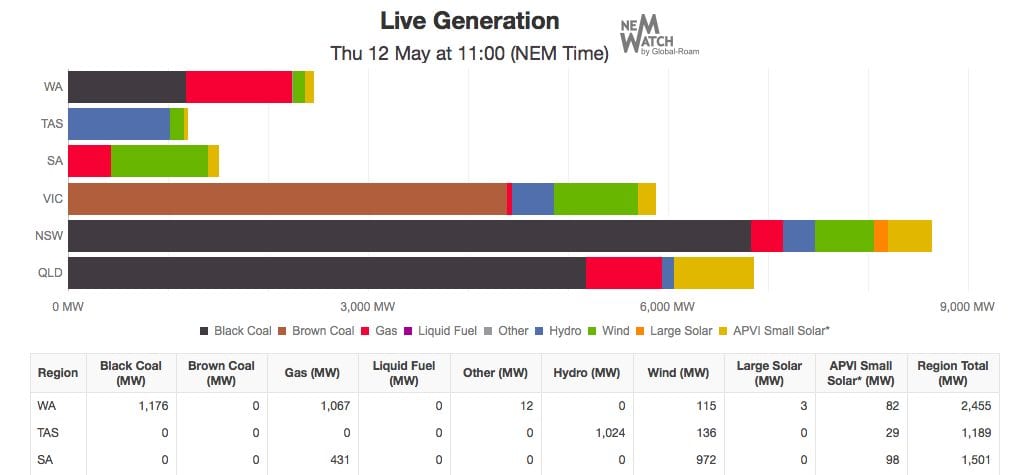Tasmania has returned to 100 per cent renewable electricity – at least temporarily – as significant rainfalls replenished dam levels and the the state was able to operate without gas-fired or diesel generation for the first time since the beginning of the year.
The return to 100 per cent renewable electricity (highlighted above in RenewEconomy’s live generation widget) has also brought with it a significant fall in the price of wholesale electricity.
In recent days wholesale prices have fallen below $30/MWh and averaged in the mid $40s/MWh, compared to nearly $300/MWh when it was forced to rely on gas and diesel.
The ability to switch off its fossil fuel power and rely instead on hydro, wind and solar means that Tasmania has gone from having the most expensive electricity in the country, to the cheapest.
Tasmania has been facing an energy crisis since late December when the Basslink cable to the mainland was cut, damn levels fell to record low levels, and bushfires forced some hydro plants to switch off.
The state was forced to restart its mothballed gas-fired generator, import new parts from the Middle East and also bring in 200MW of diesel gen-sets to ensure there was enough power.
Rains over last week and the weekend have lifted dam levels back up above 16 per cent, allowing the hydro generators to run harder over recent days, eliminating the need for expensive fossil fuels. Diesel has not been used since May 1, and the gas generator was switched off on May 11.
Update: Hydro Tasmania CEO Stephen Davy said in a later statement power stations associated with Hydro Tasmania’s smaller storages are generating at maximum capacity to minimise the chance of precious rainwater from spilling and being wasted.
“The past 10 days have been very positive. We’ve had more rain than predicted and our storages have risen strongly,” he said. “There’s currently enough hydro and wind energy available to meet all Tasmanian demand. For the first time in months, our island is being powered solely by renewable energy.”
However, Davy said the business is still taking a cautious and prudent approach to recovering from the current situation.
“We may require some bursts of diesel and gas generation over coming months. The Energy Supply Plan was designed to allow flexible generation depending on circumstances: if it rains more, we will generate less from gas and diesel. If it rains less, we will generate more.”
Last month, the Tasmania government won agreement from Canberra to co-fund a study into a second cable to the mainland. Many analysts are supportive of this move, but only if it is accompanied by more wind and solar output that would allow more renewable energy to be exported to the mainland, rather than paving the way for more coal-fired generation to be imported.











